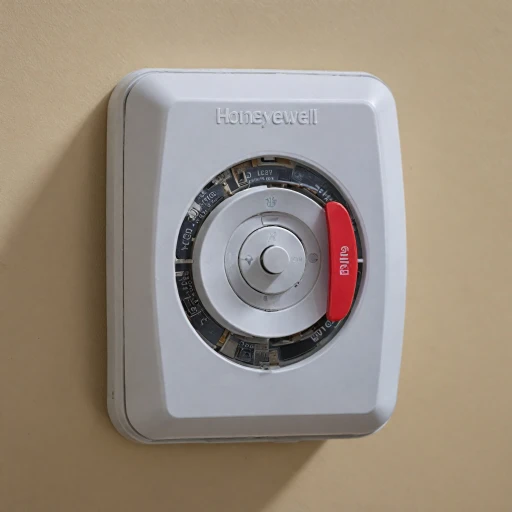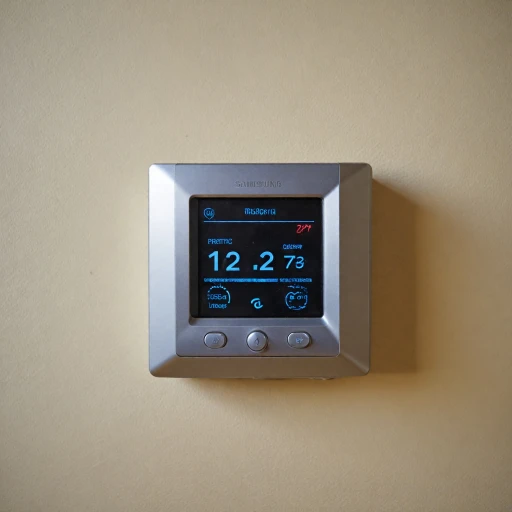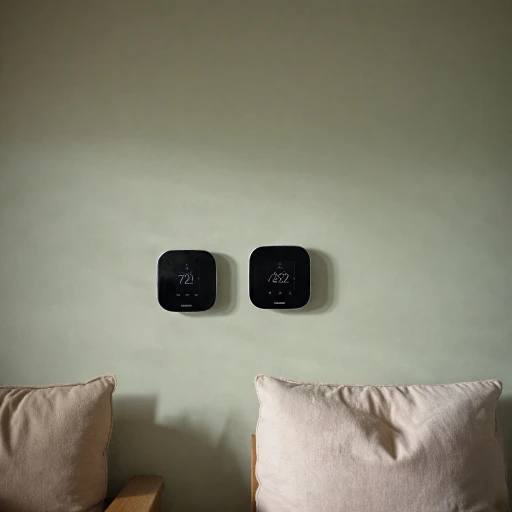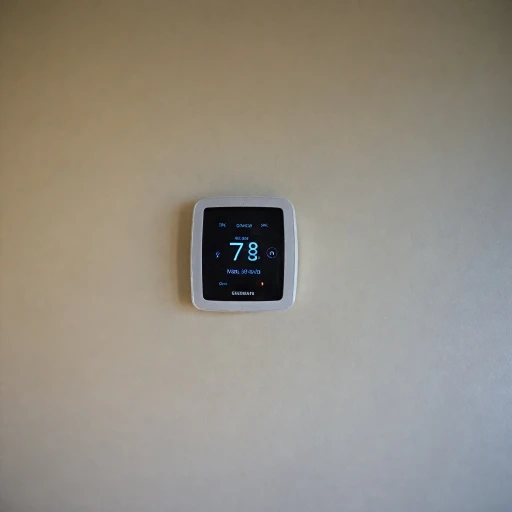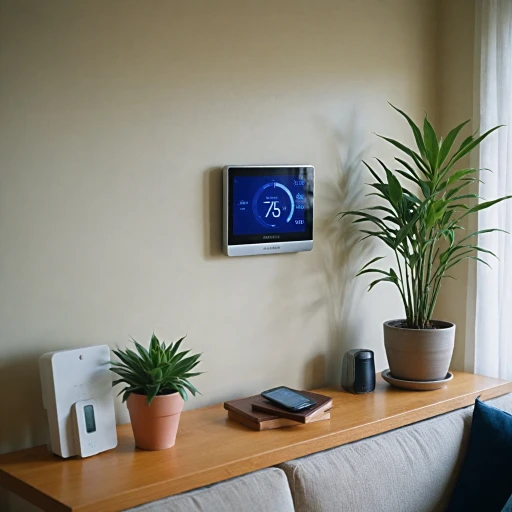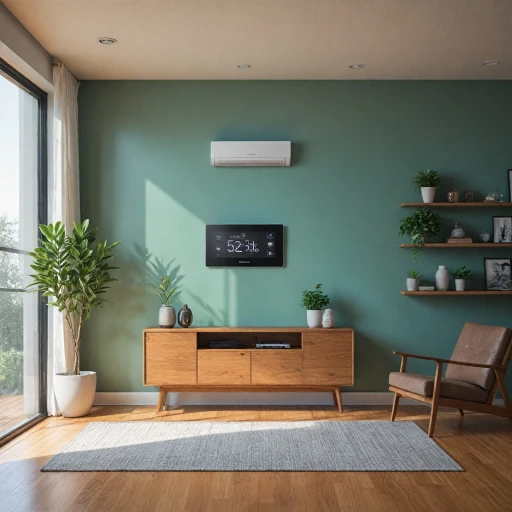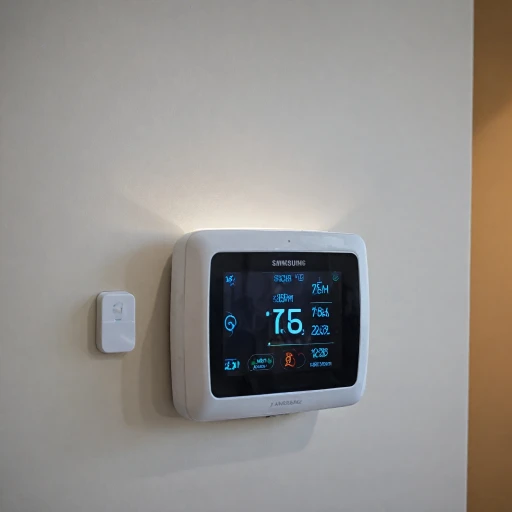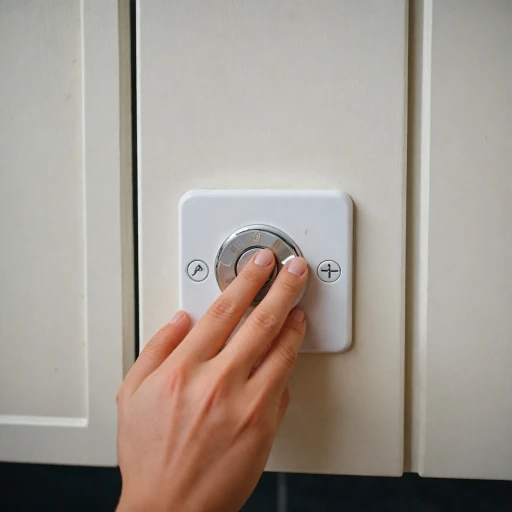The Role of Sensors in Smart Thermostats
The Importance of Technology in Climate Control
The presence of sensors in smart thermostats, particularly in products by brand Honeywell, has revolutionized how we interact with home climate control systems. With Honeywell resideo and its line of innovative products, these sensors maintain the delicate balance of comfort and energy efficiency in our living spaces. They work by collecting and analyzing temperature data from various points in a house, helping the thermostat make informed choices about heating or cooling adjustments.
One of the key components used in smart thermostats is the temperature sensor. These devices are specifically engineered to gauge the personal comfort needs of individuals in different rooms. A well-placed room sensor will ensure that the temp sensor only adjusts what’s necessary, avoiding the unnecessary heating or cooling of unoccupied spaces.
Enhancing Technology with Smart Components
Honeywell smart thermostats integrate advanced sensors that can account for factors such as room occupancy and topography. By placing sensors in strategic locations like near doors or windows, these systems can prevent energy waste, providing a seamless and cost-effective way to maintain optimal indoor climate.
- Smart room technology enables different zones to have separate heating or cooling schedules.
- Room sensors can provide data feedback to the main thermostat system, allowing for precise temperature regulation.
- Incorporating room sensors ensures that areas often neglected in traditional systems, like corridors or corners, are accounted for in the overall temperature management.
For those looking to learn more about the intricacies of implementing these systems, enhancing home comfort with ecobee room sensors offers additional insights into the adoption of similar technology across different brands and applications.
How Honeywell Sensors Enhance Energy Efficiency
Efficiency Boost with Honeywell Sensors
In the realm of smart thermostats, energy efficiency is a cornerstone. Honeywell sensors play a significant role in enhancing this efficiency by providing precise temperature readings and maintaining optimal energy use throughout the day. Utilized in a wide variety of Honeywell smart products, these sensors ensure that your heating and cooling systems are only active when necessary, ultimately reducing energy consumption and lowering price points on utility bills.
The integration of these sensors allows smart thermostats to account for various factors such as occupancy and room conditions. When room sensors detect that a room is unoccupied, the system can adjust the temperature accordingly, avoiding unnecessary heating or cooling. This smart management doesn't just promote energy savings but also contributes to user comfort.
Honeywell's advances in this field are notable. The enterprise has developed systems that toggle the operation of the thermostat based on data collected by numerous sensors placed strategically around a property. Known for their commitment to innovation, they've attained a strong reputation within the market. Users can conveniently compare their systems with similar products to discover evident advantages in both control and efficiency.
Moreover, the integration of AI in Honeywell systems helps further fine-tune these operations. As these systems learn from user personal preferences and historical data, they continually adjust to improve energy efficiency. Thus, Honeywell smart thermostats not only serve as a tool for maintaining a comfortable environment but also contribute substantially to energy conservation efforts.
For those looking to delve deeper into how sensors like those in Honeywell devices contribute to overall energy efficiency in smart thermostats, you might find the analysis at understanding the benefits of ecobee temperature sensors insightful. It offers a broader perspective on sensor-driven efficiencies, applicable across various smart thermostat brands.
User Comfort and Honeywell Sensor Technology
Maximizing User Comfort through Advanced Sensor Technology
Incorporating Honeywell sensors in a smart thermostat significantly elevates user comfort. By continuously monitoring temperature variations and adapting to the ambient conditions of each room, these sensors ensure a consistent and comfortable climate throughout your living space.
Honeywell’s sophisticated room sensors can detect even slight changes in temperature. This feature allows their smart thermostats to make instantaneous adjustments, optimizing the heating or cooling mechanisms to maintain the preferred settings. For instance, when the room sensor picks up a drop in temperature, the thermostat can quickly activate the heating system.
Beyond basic temperature regulation, Honeywell products make use of advanced connectivity. The inclusion of smart room technology enables seamless integration with smart home systems, allowing owners to control their home’s climate from a single device. This integration can enhance your personal experience by offering customizable settings based on your preferences and routine.
Furthermore, the placement of room sensors in strategic locations around the home allows for a more personalized heating or cooling experience. Unlike traditional centrally controlled systems, which may overlook discrepancies in temperature across different rooms, Honeywell’s smart room sensors ensure every area reaches the desired comfort level.
Despite the brand Honeywell's strides in user-focused design, it's worth noting the practical matters such as ensuring devices are functioning optimally, including keeping the sensors powered adequately to avoid issues like low battery alerts. This attention to detail emphasizes their commitment to achieving a balance between comfort and advanced technology in hone environments.
Enhancing such integrated systems can also involve complementing Honeywell thermostats with other automation devices. Check out their applications and integration capacities at
enhancing home automation to fully realize the comfort potential in your living spaces.
Integration with Home Automation Systems
Seamless Integration For Enhanced Home Automation
Smart thermostats have evolved into sophisticated systems that not only maintain your home’s temperature but also integrate seamlessly with various home automation systems. Amongst the pioneers of enhancing this capability is Honeywell, with their advanced sensor technology playing a pivotal role.
The integration of Honeywell's sensors with home automation solutions allows users to control multiple devices such as lighting, security cameras, and even door locks from a single interface. This seamless connectivity ensures that your entire system works cohesively, maximizing both convenience and efficiency.
When a smart thermostat with Honeywell sensors detects changes in temperature, the data is not only used to adjust heating and cooling but can trigger other connected devices within your home. For instance, if the room sensors recognize a drop in temperature, the system might automatically close the blinds or start a fireplace to maintain comfort without over-relying on traditional HVAC.
Moreover, Honeywell’s smart products also account for user preferences, personalizing your environment. You can set profiles for different times of the day, like "Home," "Away," or "Sleep," with each mode adjusting various settings for optimal comfort and energy savings.
The adaptability of Honeywell’s sensors to different smart home systems is made possible by compatibility with a wide range of protocols, ensuring greater flexibility whether you are using their own Honeywell Resideo platform or others in the market.
This integration offers a comprehensive approach to managing your home environment, making Honeywell products a valuable investment for a futuristic, smart home ecosystem.
Challenges in Sensor Technology for Smart Thermostats
Navigating the Challenges in Sensor Technology for Smart Thermostats
In the world of smart thermostats, sensors like those from Honeywell play a vital role. However, even the most advanced technology can encounter obstacles.
One primary challenge is ensuring the accuracy of temperature measurement. While Honeywell room sensors and temperature sensors are engineered for precision, external factors like room layout, door positioning, and even furniture placement can impact sensor readings. To provide reliable data, products Honeywell designs need to account for these variables without user intervention.
Moreover, the integration with other devices is crucial. With the increasing desire to compare systems and include smart thermostats in broader home automation systems, sensors must toggle seamlessly between different functionalities. Smart integration demands sophisticated communication between devices to avoid data conflicts like maximum file size limitations or errors caused by files exceeded in the digital communication channels.
Low battery issues can also present challenges. Smart thermostats rely on continuous power to function correctly, especially those with a verified purchase from brand Honeywell, which promise long-lasting performance. As these systems expand, ensuring that low battery alerts are accurate and timely is essential for maintaining uninterrupted service.
Finally, there's the issue of balancing cost with functionality. While Honeywell's room sensors and systems offer great energy efficiency and user comfort, keeping the price competitively low while incorporating advanced technology is complex. The quest to develop innovations that maintain affordability while integrating robust features like CLS fill and smart room settings continues to drive product research and design.
Addressing these challenges head-on ensures that the future of sensor technology in smart thermostats remains promising, pushing the boundaries of what these devices can achieve.
Future Innovations in Honeywell Sensor Technology
Emerging Trends in Honeywell Sensor Technology
Looking into the future, Honeywell is poised to continue innovating its smart thermostat sensors to further enhance both energy efficiency and user comfort. As technology advances, several trends and developments are expected to shape the next generation of Honeywell's sensor products.
One key trend is the integration of artificial intelligence and machine learning algorithms. Honeywell is likely to harness these advanced technologies to improve the accuracy and responsiveness of temperature and room sensors. This would allow smart thermostats to learn from household patterns over time and adjust settings more intuitively. By doing so, Honeywell smart thermostats can provide more personalized comfort levels while optimizing energy use.
Furthermore, improved compatibility with various home automation systems is anticipated. As more households adopt smart home devices, Honeywell sensors must interact seamlessly with an expanding range of home automation systems. This integration will enable a more cohesive and efficient smart home experience, allowing users to automate routines and manage multiple devices through a single interface.
In the realm of sensor technology, continual improvements in sensitivity and precision are expected. Honeywell is likely to develop sensors that are more adept at detecting minute changes in room temperature, occupancy, and even air quality. Such advancements will empower users to maintain ideal indoor conditions with minimal manual intervention.
The ongoing trend towards sustainability will also impact future developments. Honeywell is expected to focus on creating products that are not only energy-efficient but also environmentally friendly. This includes using materials that reduce the ecological footprint and designing systems that minimize power consumption.
Moreover, challenges such as low battery issues and device compatibility must be addressed to ensure the reliability of Honeywell's sensor technology. As the brand Honeywell continues to innovate, addressing these challenges successfully will be crucial for maintaining its reputation in the smart thermostat market.
Lastly, the continued push for lower price points without compromising on quality will remain an important consideration. Consumers will likely see more competitively priced options from Honeywell that do not sacrifice performance or features.
These future innovations highlight Honeywell's commitment to advancing its smart thermostat products and maintaining a competitive edge in the market. As user demands evolve, Honeywell's dedication to enhancing sensor technology will be instrumental in delivering superior comfort and energy management solutions for modern homes.
